From recreational kayaking to whitewater disciplines, we talk about various types of kayaking here.
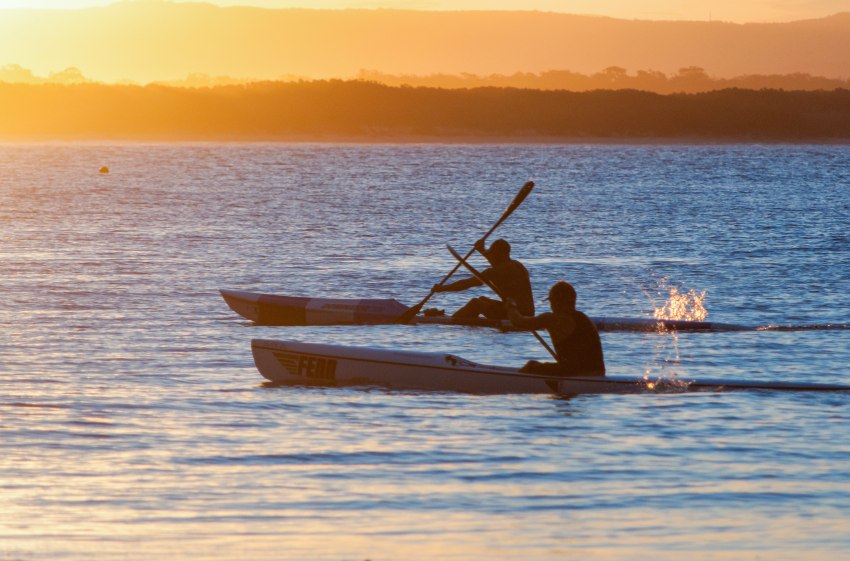
It’s no surprise that kayaking is soaring in popularity. Kayaking is an enjoyable way to spend a few hours or a whole day, either by yourself or with a group of friends. In fact, you probably are having such a good time you don’t even realize you’re also getting in a workout.
But is kayaking good exercise? The short answer is yes. Kayaking is an excellent form of exercise and has many physical and mental health benefits. Keep reading to find out more.
Is Kayaking a Good Workout? How Paddling Benefits Your Physical Health
Kayaking has everything you need for a low-impact, full-body workout. It provides both cardio and strength training that is easy on your joints. Spending time at a “blue gym” is better than anything you get in an aerobics studio. It doesn’t matter if you’re old or young, kayaking is a great way to get in shape and lose weight. And, if you have an Apple watch, there are some great paddling apps to track your time on the water.
Is Kayaking Good for Your Heart?
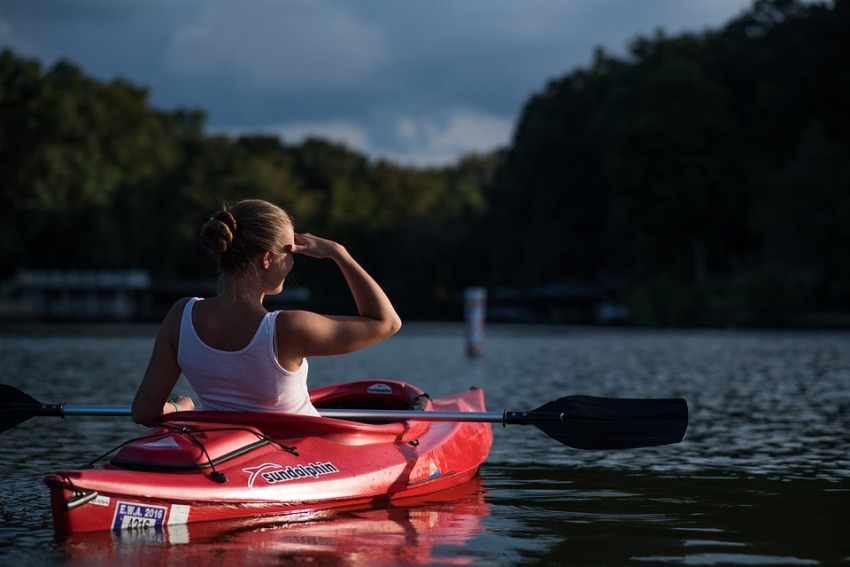
Paddling a kayak is a great cardio workout, and you can choose your level of intensity. A leisurely paddle on a slow-moving river or a calm lake is perfect for someone who is new to exercise or only wants moderate aerobic exercise. Just 150 minutes of physical activity each week is all you need for better physical health.
If you’re looking for something a little harder, you only need to pick up your paddling to really get your heart pumping. You can also mix it up with some high-intensity sprints. Go as fast and hard as you can for 30 seconds and then rest for 10 seconds. Repeat six times and then take a break. If you’re on a river, try doing some ferries or paddling upriver.
So, how does all this paddling help your heart and keep you healthy?
Aerobic exercise makes your heart stronger and helps lower your blood pressure and bad cholesterol. A stronger, healthier heart and cardiovascular system reduce the risk of heart disease and stroke. Men’s Health listed kayaking as one of the best workouts for heart health and stated that it is one of the few cardio workouts that centers around the upper body.
Getting in a good cardio workout also helps you lower your blood sugar levels, which is good news for people with type 2 diabetes or insulin resistance.
Is Kayaking a Good Way to Increase Endurance?
Do you wish you had more energy and stamina throughout the day? Do you get tired just walking around the block? Kayaking is an excellent way to build up your endurance since you’re paddling for hours. You will soon discover that you can kayak longer without getting tired. Not only that, but you will discover that you have increased energy throughout the day, and everyday tasks will become easier.
Can Kayaking Help You Build Muscle?
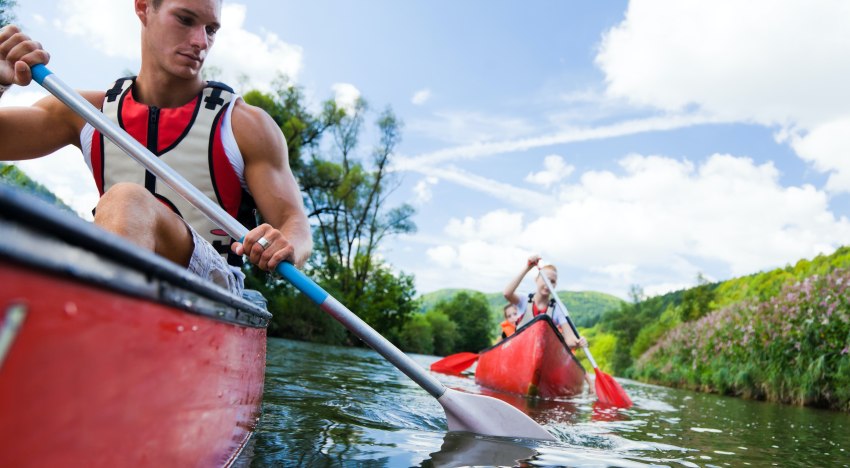
If you’re looking to increase your strength, kayaking can help build up muscles in your arms, legs, back, and shoulders. You don’t have to worry about getting big, bulky powerlifter muscles. Instead, kayaking helps you develop a lean, toned body.
Kayaking works many major muscle groups in the body, such as:
- Upper Body – Paddling works the upper arms and forearms. The push and pull process involves working your biceps while you have one side of the paddle in the water and also engaging the triceps with the counter-movement of thrusting the other side out. Both forearms are continuously in motion with the constant rotation of the paddle. The steady rowing motion will also strengthen the upper back and shoulders, especially the deltoids and trapezius.
- Legs – It may not feel like it, but your legs are also getting a good workout when you’re kayaking. Your legs are involved in an isometric exercise, which uses muscle contraction, to keep your body stable and balanced while also maneuvering the kayak.
Building muscle has numerous benefits. You’re not only strengthening your muscles, but you are also strengthening your bones, thus lowering the risk of osteoporosis. In addition, according to the CDC, strength training can also help with balance, reduce the risk of falls, lower blood sugar levels, and boost your mental health. Having more lean muscle also burns more calories and can help you lose weight.
Is Kayaking a Good Ab Workout?

Having a strong core is essential to good posture, balance, and stability. It can reduce the risk of injury, especially to your back. Core strength makes it easier to do everyday tasks. Your abs are engaged the entire time you are kayaking, keeping your body upright and balanced. The twisting motion works your obliques. And, not only are you making your abs stronger, but you are also working the muscles in your lower back.
Spending an enjoyable day paddling on the water will give you six-pack abs much faster than hours of crunches and sit-ups at the gym.
Kayaking is a Good Way to Increase Your Vitamin D
Vitamin D is called the ‘sunshine vitamin.’ Unfortunately, many people have a vitamin deficiency. This deficiency can lead to several medical problems, such as:
- Osteoporosis
- Obesity
- Diabetes
- Hypertension
- Chronic Fatigue
- Increased risk of heart disease
- Dementia in older adults
You need vitamin D for disease prevention, strong bones and muscles, and a healthy immune system. It’s tough to get the amounts of vitamin D required from food sources; fortunately, our bodies can produce vitamin D when exposed to sunlight. Spending the day kayaking can really ramp up the production of this essential vitamin.
Not Just Your Body: Is Kayaking Good For Your Mental Health?
Kayaking does more than give you a good workout. It also helps to improve your mental health. Spending time on the water can help clear your mind from your everyday worries and soothe your soul.
Can Kayaking Help Relieve Stress?

Everyone experiences stress at times; however, too much stress has serious health consequences. Chronic stress can lead to elevated blood pressure, heart disease, stroke, depression, anxiety, irritability, and insomnia.
Kayaking can be a very peaceful experience. Imagine an early morning paddle on a quiet waterway. You watch the mist rise from the water while you sip your coffee. Birds fly from branch to branch, calling out to each other. Your stress levels start to fall while anxiety leaves your mind. In fact, studies have shown that being in and around water can help lower stress.
Just the process of the repetitive rowing motion can take you into a meditative state as you glide through the water. In addition to reducing stress, meditation can help increase focus, reduce anxiety, alleviate depression, and improve memory.
How Does Kayaking Improve Your Mental Health?
In addition to lowering stress levels, kayaking can help improve your mental health in other ways.
You See Things From a New Perspective

There are some places that you will never be able to see when you’re on land. Kayaking allows you to visit different places that you can only access by boat. You have the opportunity to release your inner explorer and make new discoveries.
Kayaking is a Fun Way to Socialize With Others
When you’re kayaking, you’ll have the opportunity to meet others that have the same passion for kayaking as you. It’s also a pleasant way to spend quality time with your family and friends.
Having an activity you enjoy and socializing with loved ones can help lower stress and help you maintain a healthy brain. Being around other people improves memory and may decrease the likelihood of developing dementia in your later years.
Kayaking Can Make You Smarter
You’ve heard the phrase “use it or lose it.” That also applies to our brain. You probably already know that learning new skills can improve your memory. But, consider this scenario: you’re kayaking down a fast-moving river, and you see rapids and rocks ahead of you. You need to quickly figure out how you’re going to make the line. Those navigational skills can actually change the function and structure of your brain!
Kayaking Increases the Production of “Feel Good” Hormones
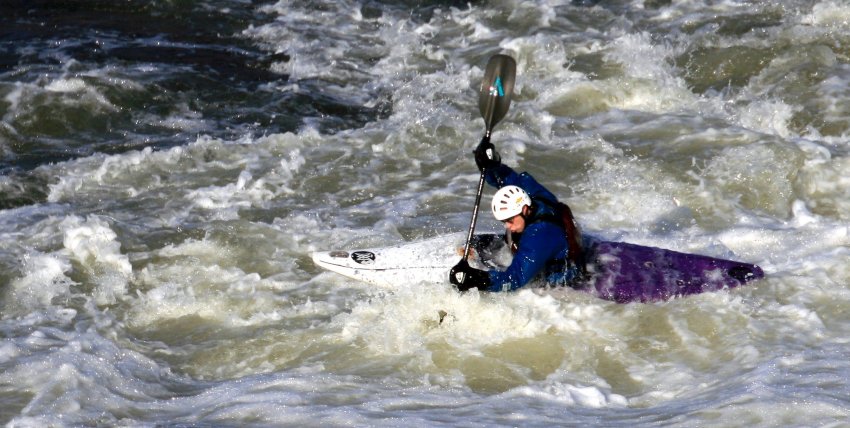
Exercising, being outside, and doing things you enjoy increase dopamine levels and endorphins in your body. Dopamine is a chemical messenger that carries signals to different cells. It causes us to feel pleasure and motivates us as a chemical reward. Too little dopamine can lead to mental health disorders and diseases such as Parkinson’s and obesity.
Endorphins are also chemicals produced by the body. They’re natural pain relievers, and they work to reduce stress. Endorphins also help you lose weight, increase your self-esteem, and ease feelings of depression.
Spending Time in Nature Improves Your Overall Health
A recent study showed that spending two hours in nature improves both physical and mental health. It provides a break from things that strain your mental resources, such as work, looking at computer screens, and driving. Being in nature has also been shown to decrease stress levels.
Kayaking Can Boost Your Confidence and Self-esteem
Your self-image improves every time you achieve a new accomplishment. It could be paddling faster or longer, traveling further, or navigating a challenging waterway.
Physical activity plays a part in how people view themselves. As a person’s physical strength, muscle conditioning, flexibility, and balance improve, they have a more positive body image and improved self-esteem.
FAQs
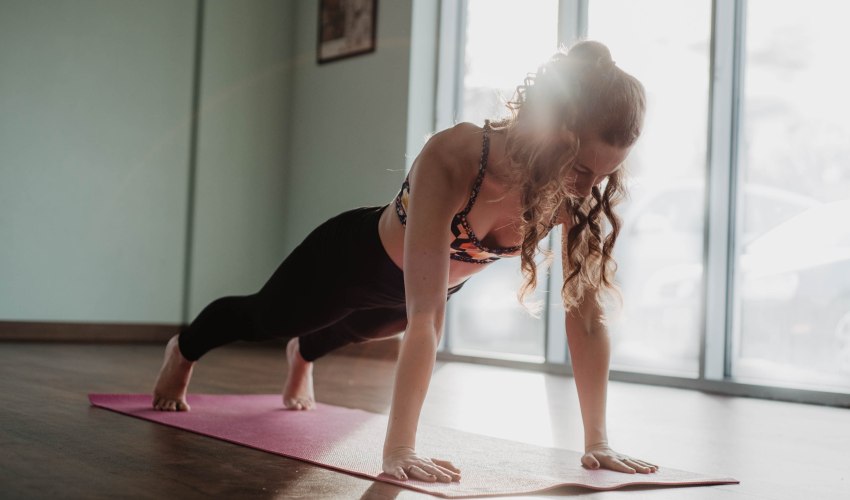
While having a basic level of fitness helps, it’s not necessary. If you can sit upright and move your arms, you can kayak. With that being said, it’s a good idea to start slowly and build up your strength and endurance. Here are some great kayaks for beginners.
Life happens, and there will be long stretches when you aren’t able to go kayaking. Or, maybe you just want to improve your paddling. There are plenty of at-home exercises that you can do that will get you ready for the water.
– Planks
Planks target several muscle groups and are great for strengthening your abs, shoulders, and quads. Here is a brief tutorial on how to do a proper plank.
– Push-ups
This exercise can flow naturally from a plank. Push-ups work your chest, shoulders, and abs. You’ll also build up arm strength. Proper form is vital, so this video will give you tips.
– Russian Twists
Russian Twists will work your core and obliques. Lifting your feet a couple of inches off the ground will also help with your balance. Here is a tutorial of different twist variations.
– Squats and Lunges
Both of these moves target your hamstrings, quads, and glutes. Remember to keep proper form, so you don’t cause strain on your knees. Watch this video for details.
– Single-Leg Romanian Deadlifts
In addition to working your back, legs, and glutes, this exercise will also help with your balance. Having good balance helps you with getting into and out of your kayak and keeps you stabilized in the water. Use this video to get tips on the proper way to do a single-leg Romanian deadlift.
If you’re a big guy or gal, or if you’re just looking to burn some calories, kayaking is a great way to do it. Every person is different, but a 150-pound person can expect to burn about 350 calories after an hour of leisurely paddling. Increase your effort, and you can expect to burn two to three times that amount. Just one afternoon of kayaking can burn up to 1600 calories!
The question should be what muscles doesn’t kayaking work! While mainly an upper body workout that works your hands, wrists, arms, shoulders, and chest, kayaking will also work your abs, lower back, glutes, and legs.
Summary
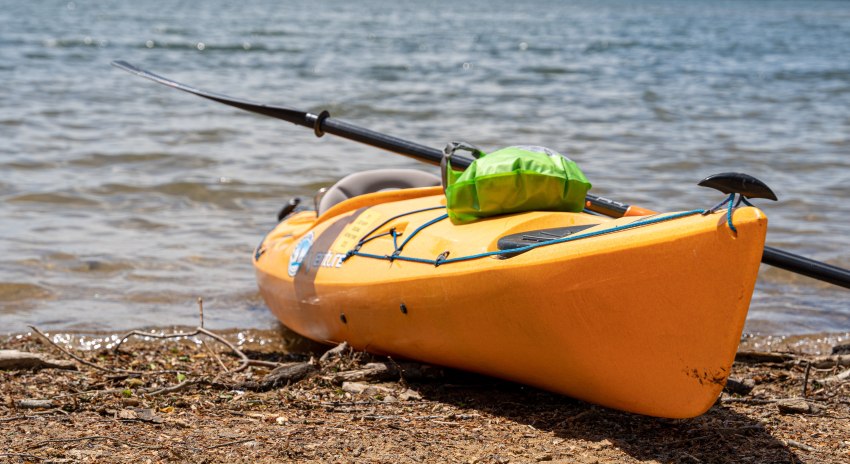
If you’re looking for a fun way to work out, then kayaking is good exercise. A few hours of paddling on the water will get your heart rate up, build muscles, increase endurance, and strengthen your abs.
Not only is kayaking good for your physical health, but it also gives a boost to your mental health. Kayaking can reduce your stress levels and improve your confidence and self-esteem. It’s a great way to spend time with your family and friends and make new friends.
Even if you’re not in shape, that’s no reason not to give kayaking a try. This low-impact activity is easy on the joints and is an excellent workout for people of all ages. Or, you can choose to go hard and get a fast-paced, heart-pounding ride through the rapids.
So, say goodbye to spending time inside a sweaty, smelly gym and say hello to the blue gym of the open waterways!









